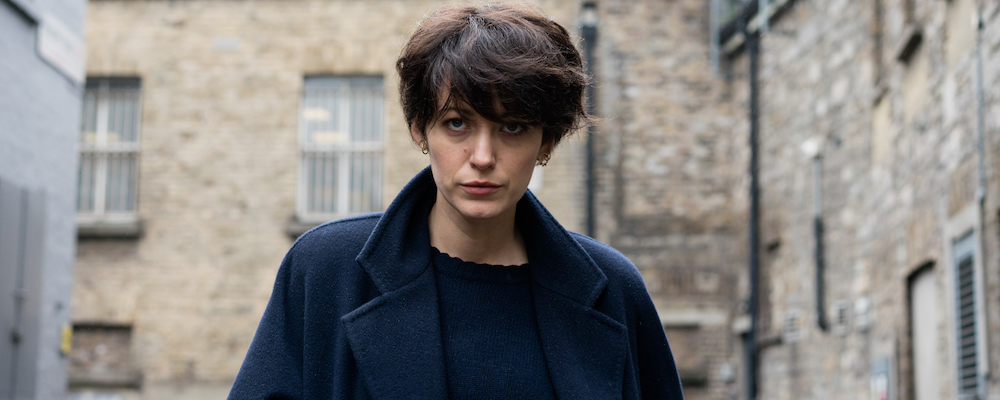‘The Rhythm Section’ Takes a Visually and Emotionally Fractured Approach to Spy Movie Tropes
Andrew Bundy
It’s refreshing to see an actor like Blake Lively push her skills to their limits in a threadbare genre flick like “The Rhythm Section,” a stylistically ambitious spin on overworked spy movie tropes that is spotty at times, but certainly goes all out when it comes to creative aesthetic. Produced by Ian Fleming’s keeper of the keys, Barbara Broccoli, and directed by Reed Morano, many of “The Rhythm Section” storytelling choices are clearly that of a former cinematographer, taking a visually and emotionally fractured, psychologically weighty approach to what is usually just popcorn subject matter. Though, the story material itself is not much stronger than that of an airplane revenge thriller, but Lively throws herself into the role.
Stephanie Patrick (Lively) blames herself for the death of her family, who were killed in a plane crash three years before the start of the film. She still clings onto the memories of them that she’s saved on her phone and has even etched their seat numbers inside the band of one of her parents’ wedding rings. Consumed by guilt and regret, Stephanie dropped out of Oxford and fell into a life of prostitution. Working in London, a journalist named Proctor (Raza Jaffrey) finds her in a dumpy spot, claiming to have evidence that the plane crash was no accident, but an elaborate conspiracy, giving her the name of a bomb maker named Reza (Tawfeek Barhom) whom Proctor claims was responsible for the tragedy that tore her life apart.
Enraged and with little left to live for, Stephanie buys a gun and stalks Reza to a cafeteria, aiming to put a bullet in his brain, but she doesn’t hide her motives well, scaring the alleged terrorist back into hiding. Looking through Proctor’s files Stephanie discovers coordinates to a location in the Scottish Highlands, where she is captured by a mysterious man named “B” (Jude Law), who locks Stephanie up, informing her, “You don’t have a clue about the scale of this mess you’ve caused.” Stephanie learns that “B” is former MI6, telling her that Reza works for a mysterious man who goes by the codename “U-17.” Initially dismissing her as incapable, “B” eventually starts training Stephanie to be a globe-trotting assassin; his ruthless lessons brutally instructive, the film begins what almost feels like a martial arts training montage that feels somewhat shoehorned in, but, again, earns style points.
After months of ruthless instruction, “B” sends Stephanie out into the field, assuming the identity of a contract killer named Petra, but the two rogue operatives also need funding (espionage work isn’t cheap). In a convoluted, plot run around, Stephanie secures a financier, someone who also lost loved ones in the crash, and eventually locates an information broker, Marc Serra (Sterling K. Brown). Soon, she and “B” start lining up her targets, all the various links in the chain responsible for her family’s murder, as well as the deaths of countless others.
Morano’s film gets a lot of mileage out of its cinematic qualities, which drags the film’s pace down throughout the first half, but “The Rhythm Section” finds its footing somewhere around the middle, before overstaying its welcome. Some of the filmmaking choices are bold, radical even, for a studio project of this nature, but others feel out of place, or are enhancing already apparent ideas. During the training sequence, Stephanie swims across a body of freezing cold water, waves crashing, the camera bobs up and down beneath the water; literally in over her head, the slosh of foley sound effects are almost deafening. Morano frequently makes use of trickery of perspective and subjective sound design, using focus racks, audio cacophonies, and disorienting POV shots to put the audience inside Stephanie’s head space.
Sometimes the aesthetic decisions are quite effective, such as with the film’s centerpiece car chase, the staging of which is almost visceral enough on its own to be worth the price of admission alone. But the fight scene that precedes this outstanding action sequence is a sloppy, shaky cam brawl, the dramatic urgency largely consisting of two characters wrestling for a gun and reaching for a respiratory mask. The fragmenting editing approach is also a double-edged sword. It works extremely well building tension throughout a scene wherein Stephanie prepares for a kill in a penthouse bathroom; it’s refreshing to watch a cold-hearted killer stumble their way through the proceedings, anxiously, rather than instantly being the best in the world at what they do, walking away with not a hair on their head out of place. The beginning of the film feeling slightly reminiscent of “Memento” featuring flashbacks, disorienting editing tricks, and claustrophobic compositions that purposefully obscure what’s being shown to the audience.
In select sequences of “The Rhythm Section” style pays off in spades, but the story and aesthetic don’t consistently gel together, almost like they’re competing against one another; Stephanie lives inside more of a junk food paperback than an intelligent espionage thriller. Morano, who shot acclaimed films such as “Frozen River,” and “Kill Your Darlings,” before going on to win an Emmy for directing “The Handmaid’s Tale,” clearly has a head full of expressive ideas, but never seems to know when to dial the visual experimentation down a notch, or to turn the overbearing score off. It doesn’t help that, except for Lively’s flawed human performance, the material is unoriginal and side character motivations are muddy. Her accent may slip a few times, but Lively does do her damnedest to sell the role, even if the film’s emotional radar isn’t as strong as its raw technical craft.
“The Rhythm Section,” opens Jan 31. In theaters nationwide.

